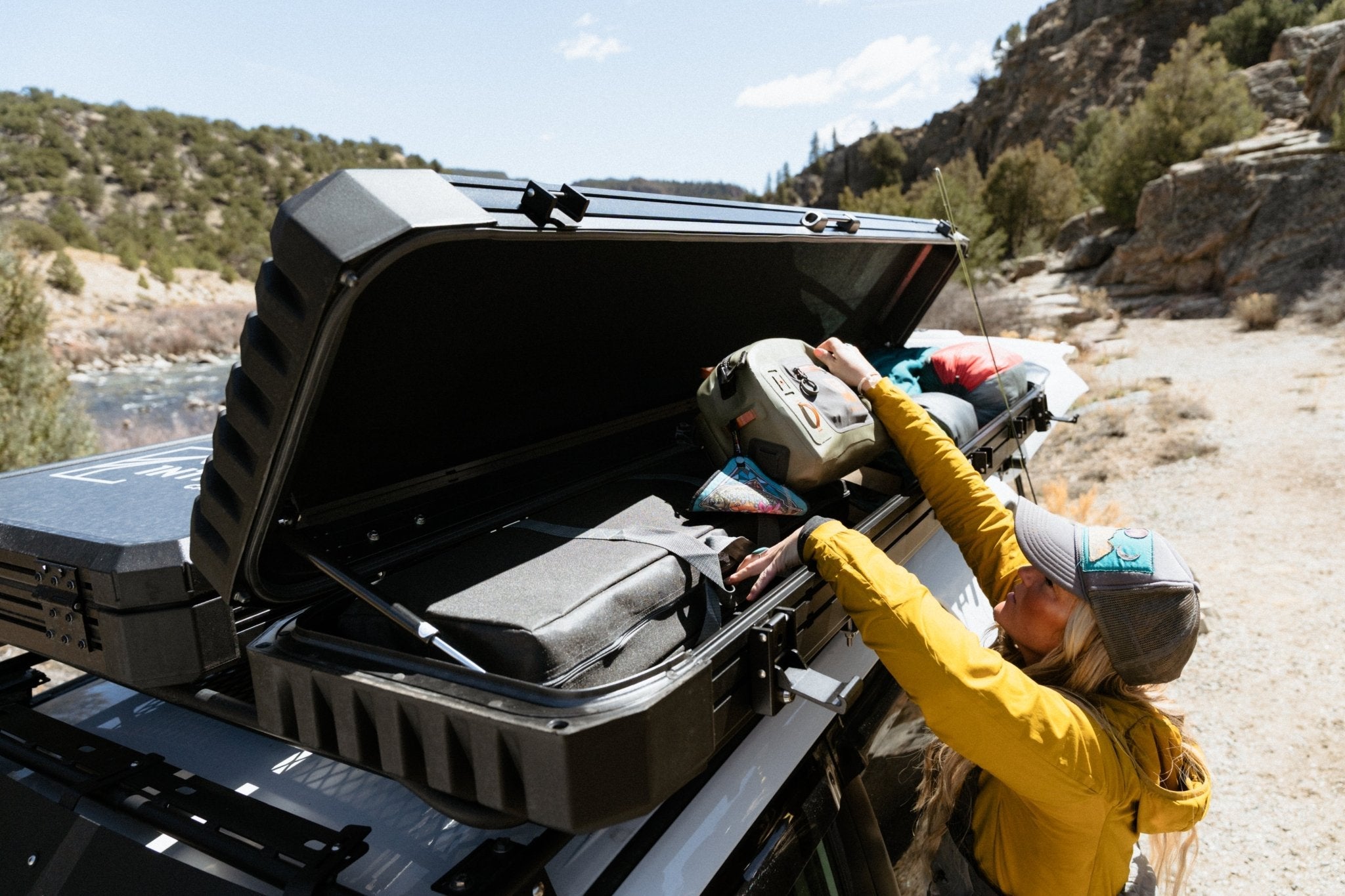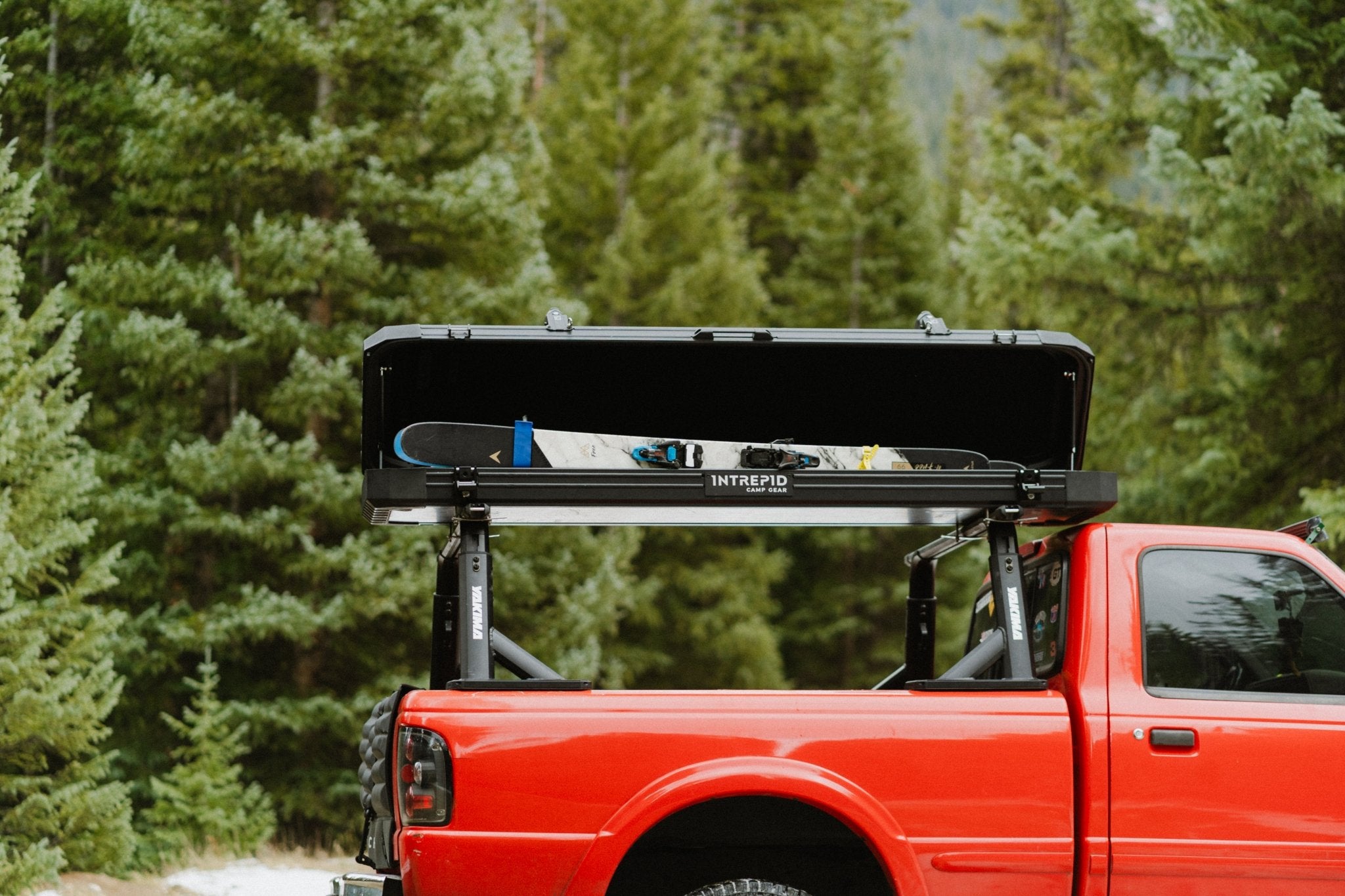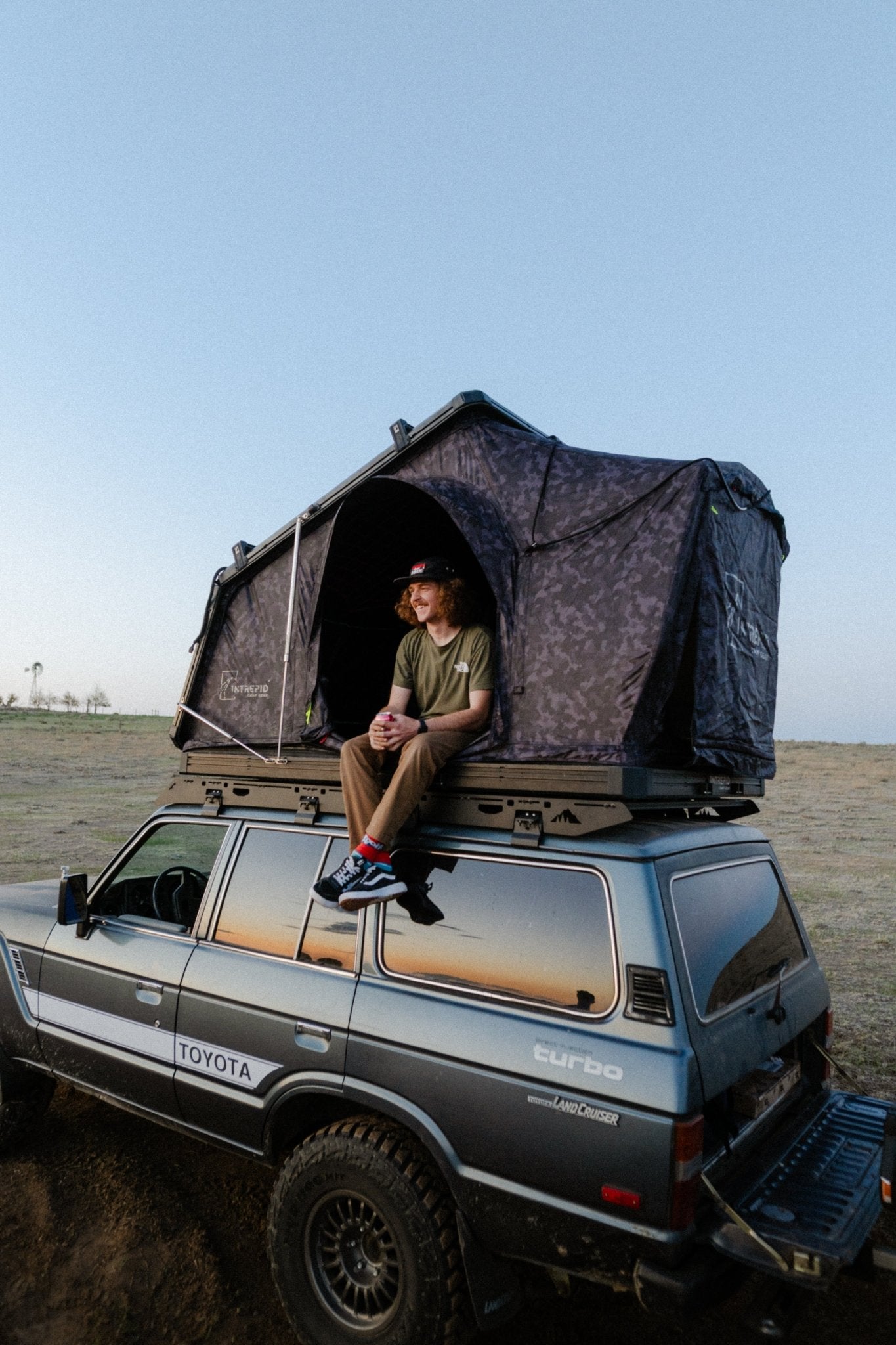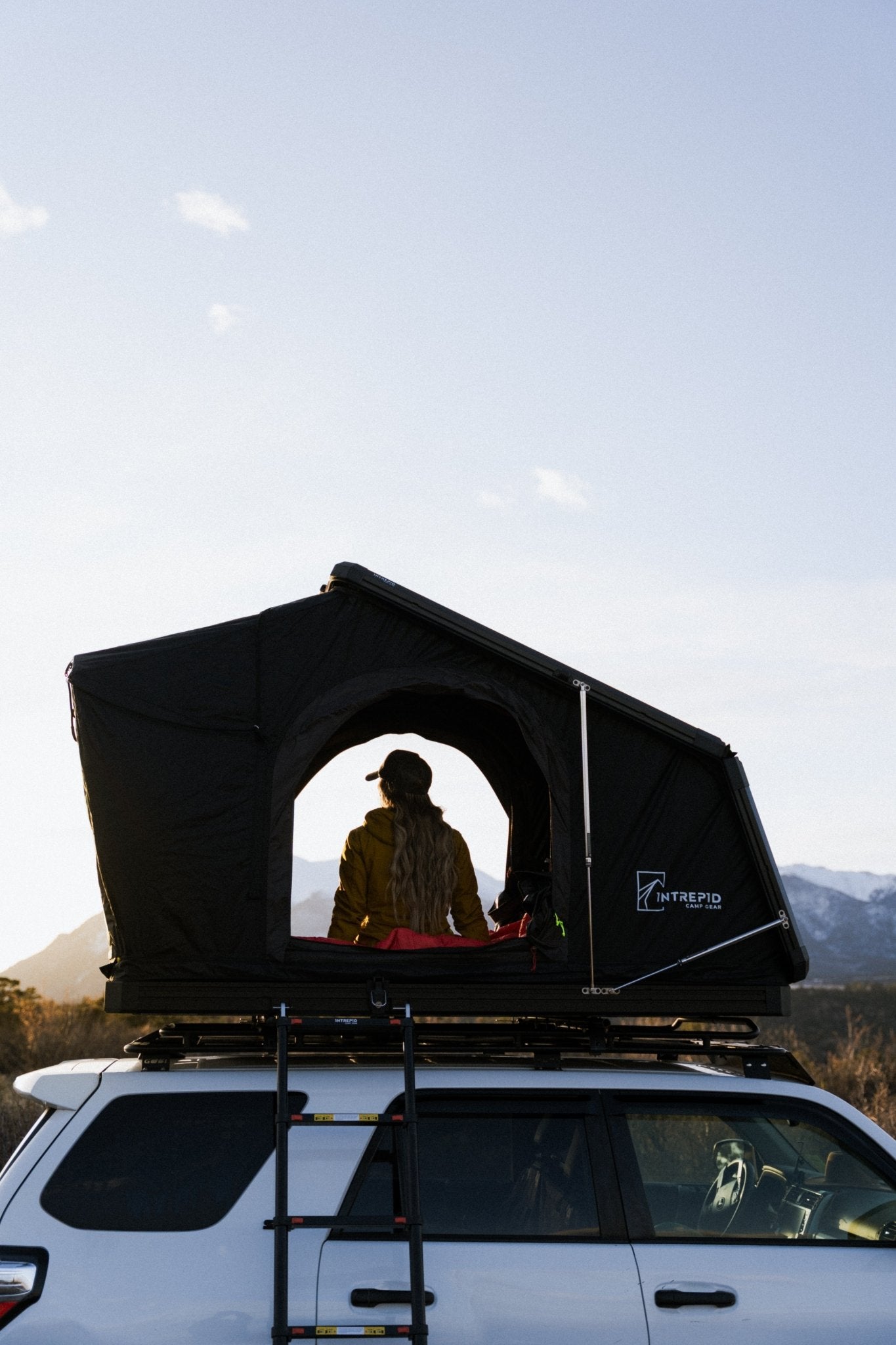Choosing the right cargo box can make all the difference when it comes to travel convenience and vehicle organization. Cargo boxes are an essential addition for outdoor enthusiasts, frequent travelers, and families alike—providing secure, weather-resistant storage for everything from camping gear to suitcases. Whether you're heading off-grid or just need extra space for a road trip, selecting the right size ensures your gear fits comfortably while staying within your vehicle’s roof load limits. A well-matched cargo box maximizes efficiency, safety, and the overall travel experience.
1. Determine What You Will be Storing in the Cargo Box
Before choosing a cargo box size, it's important to consider what you’ll actually be storing inside. The type, shape, and weight of your gear will help determine the best fit for your needs. Whether you're packing for a weekend camping trip, a ski getaway, or a long-distance road trip, knowing your gear makes it easier to find a cargo box that offers both space and security.
-
Outdoor Gear - For most outdoor adventures, cargo boxes are perfect for stowing camping essentials, hiking packs, small coolers, and snowboards. These items tend to be bulky but not too long, making mid-size cargo boxes an ideal fit. Look for a box with ample internal height and secure tie-down points to keep everything stable during off-road travel or highway driving.
-
Long Items - If you plan to transport long items like skis, fishing poles, or paddles, opt for a longer cargo box—typically 80 inches or more in length. These boxes are designed with streamlined profiles to accommodate long gear while minimizing wind resistance. Be sure to measure your gear beforehand to ensure the cargo box provides enough interior length without cramming or bending delicate items.
-
Heavy Items - Cargo boxes have a weight limit, often between 100–165 lbs, including the weight of the box itself. Heavy items like toolkits, jugs of water, or recovery gear are better kept inside the vehicle, where they’re safer and won’t strain the roof rack. Overloading a roof box can lead to handling issues and even damage the mounting system or roof structure. Always check your vehicle’s roof load capacity before packing.
Pro Tip: Consider Weight Limits for Your Cargo Box
Understanding the weight limits of your cargo box is essential for safety and performance. Overloading your roof can lead to poor handling, damage to your vehicle, or even accidents. Always calculate your load carefully to stay within safe operating limits.
-
Check Your Vehicle’s Maximum Roof Load Capacity - Start by checking your vehicle's manual for its maximum roof load rating. This number includes everything mounted on the roof—cargo box, gear, and rack system. Staying within this limit is critical to avoid damaging the roof structure or compromising vehicle stability.
-
Subtract the Weight of the Cargo Case - Cargo boxes can weigh between 25 to 60 lbs on their own. Subtract this from your roof’s total capacity to determine how much actual gear weight you can safely carry inside the box. This simple step helps prevent accidental overloading.
-
Account for Additional Rack Accessories - If you use crossbars, tie-downs, or any other roof-mounted accessories, include their weight in your calculations. Even a few extra pounds from racks or mounts can eat into your usable weight allowance and affect safety margins.
-
Consider the Cargo Box Weight Limit - Each cargo box has a maximum weight limit—often around 100 to 165 lbs. This limit exists to prevent damage to the box and ensure secure transport. Never exceed the manufacturer’s recommended weight rating, even if your vehicle could theoretically handle more.
-
Distribute the Weight Evenly - Place heavier items in the center of the cargo box and distribute lighter gear toward the sides. Balanced weight helps maintain better vehicle handling and prevents shifting during sharp turns or rough roads.
-
Do a Final Check for Total Weight - Once everything is packed, double-check the total weight of your cargo, box, and accessories to ensure you’re still under your vehicle’s roof load limit. This final check gives peace of mind before hitting the road.
2. Know the Dimensions of the Cargo Box or Case
Understanding the dimensions of your cargo box is essential to ensure it fits your vehicle and meets your storage needs. Length, width, and height all play a role in what you can pack and how the box performs aerodynamically. A well-sized box will maximize storage without interfering with your hatch, roof accessories, or overall driving experience.
Length
Cargo boxes typically range from 5 to 7 feet in length. Shorter boxes (around 5 feet) are ideal for camping gear, duffel bags, and everyday travel essentials. Longer boxes—closer to 6.5 to 7 feet—are designed to fit bulkier items like skis, snowboards, or fishing rods. If you plan on carrying long gear regularly, opt for an extended-length box to ensure everything fits without cramming or compromising safety.
Width
The width of a cargo box influences both how much gear it can hold and how well it fits on your vehicle’s roof. Wider boxes offer more storage space but can limit the ability to mount additional gear like bikes or kayaks. If you plan to use other roof accessories, consider a narrower box that leaves room for side-by-side mounting. Choosing the right width ensures both functionality and a secure, balanced setup.
Height
Height plays a key role in the cargo box’s total storage volume, with taller boxes providing more vertical space for bulkier items like sleeping bags or duffels. However, added height can create clearance issues when entering parking garages or driving under low overhangs—especially for SUVs or lifted vehicles. If your vehicle is already tall or you often park in tight spaces, consider a lower-profile box to avoid unexpected scrapes or access problems.
3. Understand Gear Capacity of Your Cargo Box
Knowing the gear capacity of your cargo box is essential to ensure it meets your specific travel needs. Measured in liters, this volume rating helps you estimate how much equipment or luggage the box can hold. Whether you’re packing for a weekend camping trip or a long family vacation, selecting the right capacity helps you stay organized without overloading your vehicle or leaving essentials behind.
How to Estimate Your Storage Needs
To estimate how much cargo space you’ll need, consider the number of travelers, the length of your trip, and the type of gear you’re bringing. A solo weekend trip might only require 10–12 cubic feet, while a family vacation or multi-person camping trip may need 15–20+ cubic feet. Ski trips require longer, narrower space for equipment, while bulky camping gear takes up more volume. Also factor in how compact or modular your gear is—packable items save space, while rigid or oddly shaped items demand more room.
What Different Capacities Can Hold
Cargo boxes have many different capacities. Intrepid Camp Gear has two size offerings of cargo boxes. The ITX 120 and the ITX 190. These two cargo boxes have the capacities of 120 liters and 190 liters. The capacity of the box is gained in length.
ITX120 Cargo Case- 120 liters
ITX190 Cargo case -190 liters
4. Ensure the Cargo Box Fits Your Vehicle
Ensuring your cargo box fits your vehicle is essential for safety, performance, and convenience. A well-fitting box minimizes wind resistance, prevents overhang that could obstruct rear access, and ensures proper weight distribution. Before purchasing, check your vehicle’s roof dimensions, compatibility with your roof rack system, and clearance requirements. A snug, secure fit ensures your gear travels safely and efficiently.
Hatch Clearance
Hatch clearance is a crucial factor when choosing a cargo box, especially for SUVs and hatchbacks. If the box extends too far toward the rear, it can block your vehicle’s hatch from fully opening, limiting access to your trunk. Always check the distance from the front crossbar to the open hatch to ensure the cargo box allows for full rear access without interference.
Roof Rack Compatibility
Roof rack compatibility is essential when selecting a cargo box. Not all boxes fit all rack systems, so it’s important to ensure your vehicle has a compatible base rack—typically consisting of crossbars and towers. Most cargo boxes are designed to work with round, square, aero, and factory crossbars, but checking the spacing and weight limits is key. Crossbar spread, which is the distance between the bars, affects the stability and fit of the box. Additionally, some boxes require T-slot adapters or specific clamps to secure properly. Before buying, confirm your roof rack system meets the cargo box’s mounting requirements to ensure a secure and safe installation. This guarantees optimal performance and protects both your gear and your vehicle.
What to Watch Out for with Large Cargo Boxes
Large cargo boxes offer lots of space, but they also come with trade-offs. Before committing to the biggest option available, consider some of the potential downsides. These can impact your driving experience, fuel economy, and even day-to-day convenience.
-
Increased Fuel Consumption - Large cargo boxes can significantly affect your vehicle’s aerodynamics, leading to higher fuel consumption—especially at highway speeds. The added wind resistance from a bulky box on the roof means your engine has to work harder, reducing fuel efficiency over long distances and increasing the overall cost of travel.
-
Difficult to Maneuver - Bigger cargo boxes can make it harder to handle your vehicle, particularly when turning, parking, or driving in windy conditions. The added bulk can affect balance and make the car feel top-heavy, which is especially noticeable when driving through curves or on uneven terrain.
-
Storage and Handling Challenges - When not in use, large cargo boxes take up significant storage space and can be awkward to handle due to their size and weight. Mounting or removing them often requires two people, and storing them at home can be inconvenient if you don’t have extra garage or shed space.
-
Height Clearance Issues - Tall cargo boxes raise your vehicle’s overall height, potentially causing problems in parking garages, drive-thrus, or under low-hanging branches. This can be especially problematic for SUVs or trucks, which already have higher profiles, making clearance something you’ll need to think about regularly.
-
Why Choose Intrepid's Cargo Cases - Intrepid’s cargo cases are designed with a low-profile build that minimizes these common issues. They offer a sleek silhouette that reduces wind resistance, making them more fuel-efficient and less intrusive on handling. Lightweight and easy to install, they also simplify storage when not in use—offering the convenience and versatility that large traditional cargo boxes can’t.
Other Considerations When Choosing a Cargo Box
When choosing a cargo box, consider more than just size. Weight distribution is critical for safe driving and vehicle balance—heavier items should be centered and evenly spread. Security features like locking mechanisms protect your gear from theft, while waterproofing ensures your belongings stay dry in all weather. These features add peace of mind and functionality for any trip.
Weight Distribution
Proper weight distribution in a cargo box is essential for safe and stable driving. The heaviest items should be placed in the center of the box, aligned with the middle of the vehicle’s roof to maintain balance and reduce sway. Avoid overloading one side, which can affect handling and fuel efficiency. Evenly spreading the load improves performance and safety, especially on long trips.
Security
Security is a key consideration when choosing a cargo box or case. Look for models with reliable locking mechanisms that secure both the box and its contents to deter theft. Dual-sided locks or integrated key systems offer added peace of mind, especially when leaving gear unattended. A sturdy lock not only protects your valuables but also ensures the box stays firmly closed while driving.
Ensure the Box is Secured to the Roof
Properly securing your cargo box to your roof rack is essential for safety and performance. Always follow the manufacturer’s installation guidelines and double-check all clamps, bolts, and locks before heading out. A securely mounted box prevents shifting at high speeds or during sudden stops, protecting both your gear and fellow drivers on the road.
Waterproof Design
A waterproof cargo box protects your gear from rain, snow, and road spray during travel. Look for models with tight-sealing lids, weatherproof materials, and reinforced edges to keep moisture out. A well-designed waterproof box ensures your clothes, camping gear, and valuables stay dry no matter the conditions, making it a must-have feature for any outdoor adventure.
Shop Cargo Roof Boxes
Ready to upgrade your travel setup? Explore our collection of aluminum cargo cases engineered for durability, weather protection, and storage no matter where the road takes you.






Share: